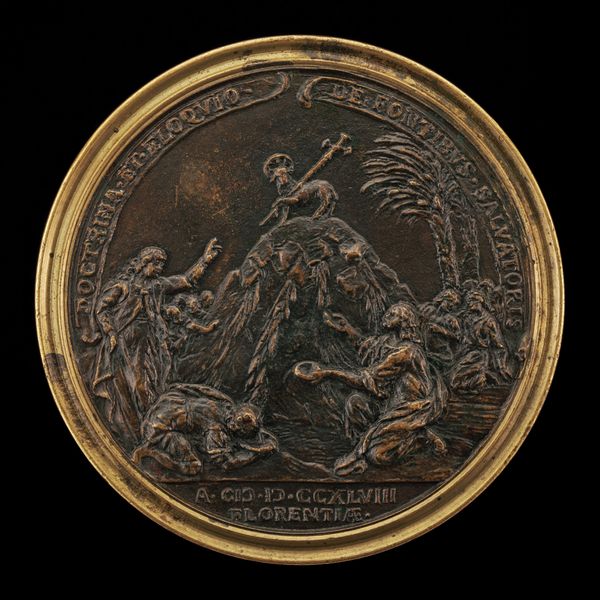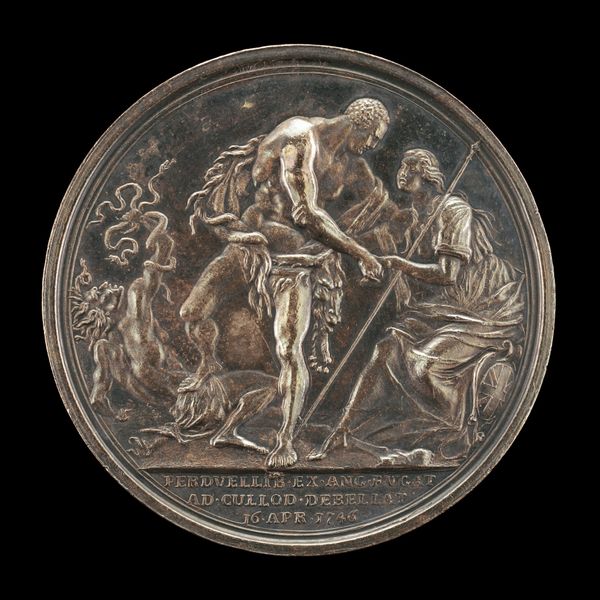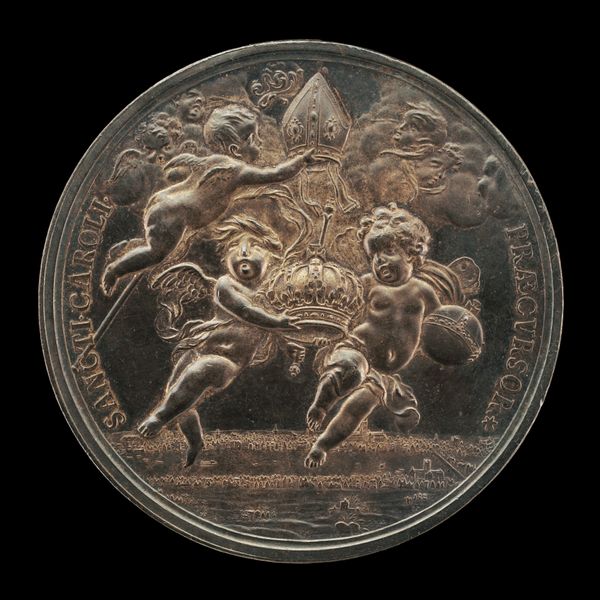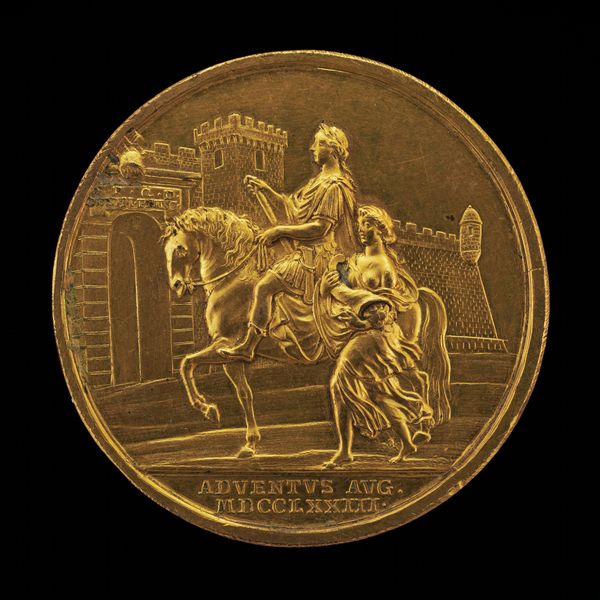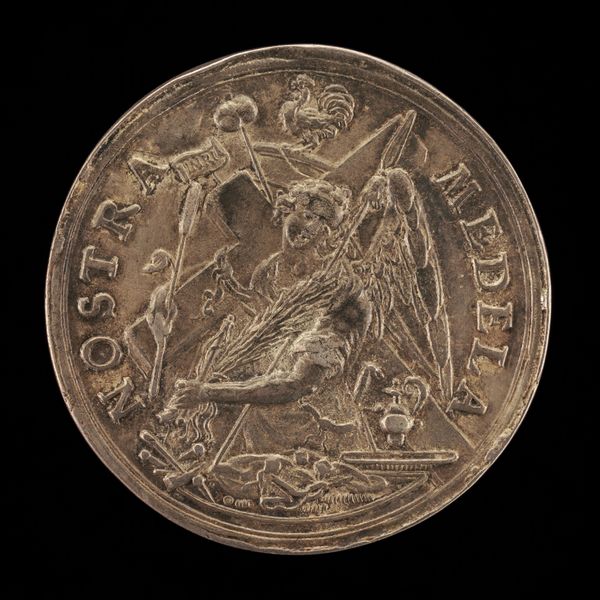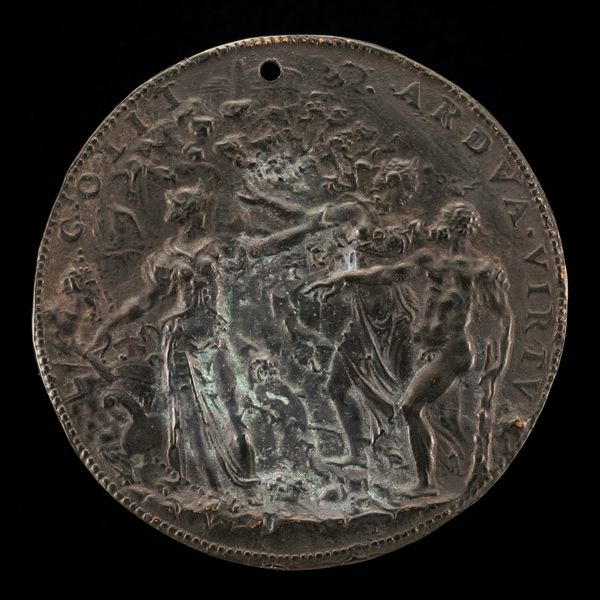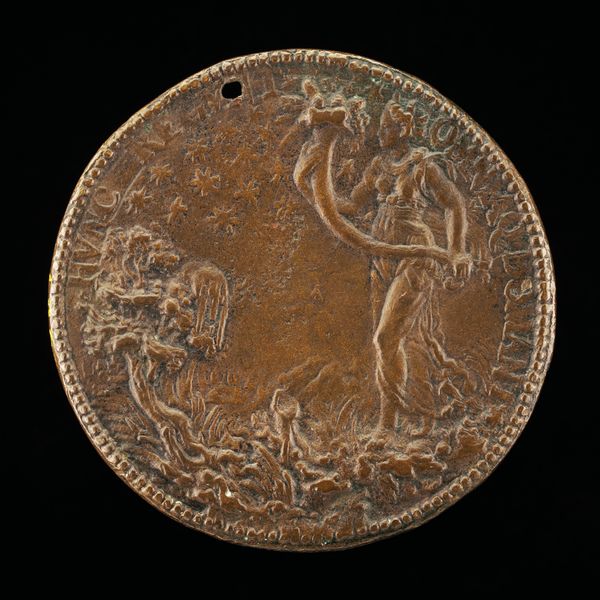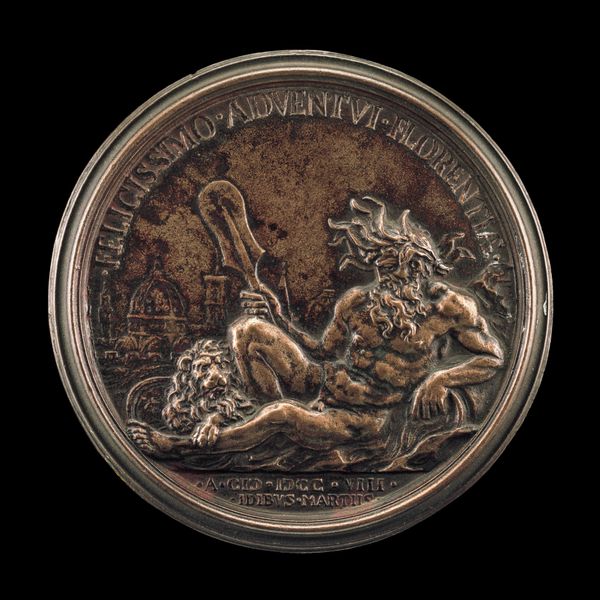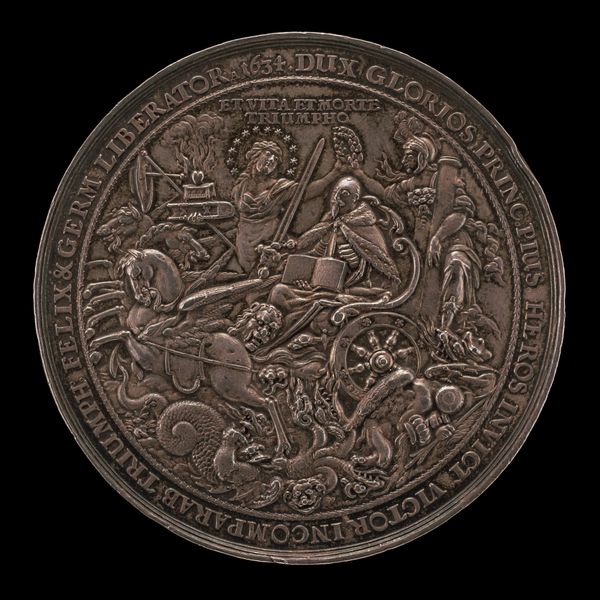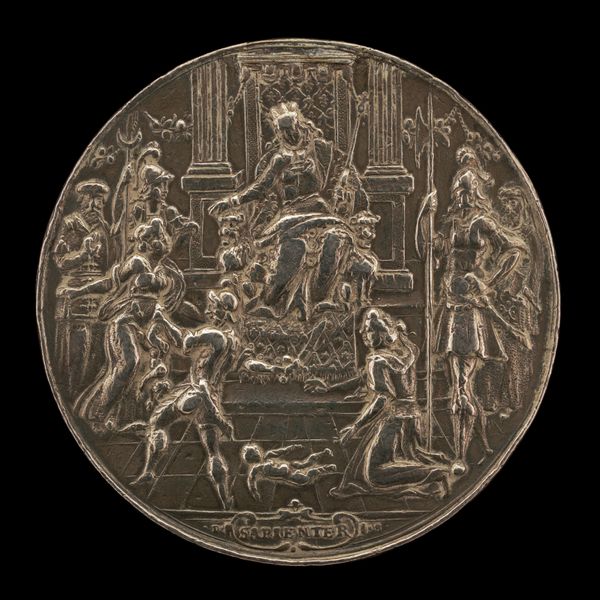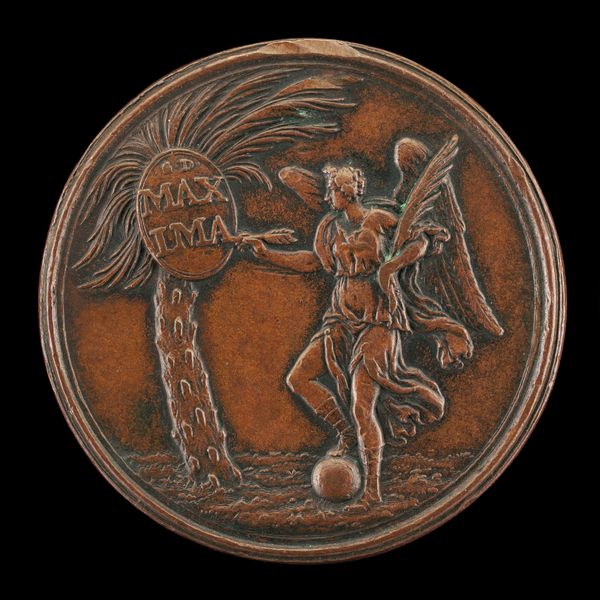![The Cholera Epidemics of 1849 and 1854 [reverse] by Joseph-Pierre Braemt](/_next/image?url=https%3A%2F%2Fd2w8kbdekdi1gv.cloudfront.net%2FeyJidWNrZXQiOiAiYXJ0ZXJhLWltYWdlcy1idWNrZXQiLCAia2V5IjogImFydHdvcmtzL2MwMWM1YTY1LWJkMjEtNDAyZS05MWUzLWNiYmM0NDEwNDZkOC9jMDFjNWE2NS1iZDIxLTQwMmUtOTFlMy1jYmJjNDQxMDQ2ZDhfZnVsbC5qcGciLCAiZWRpdHMiOiB7InJlc2l6ZSI6IHsid2lkdGgiOiAxOTIwLCAiaGVpZ2h0IjogMTkyMCwgImZpdCI6ICJpbnNpZGUifX19&w=3840&q=75)
metal, relief, sculpture
#
medieval
#
allegory
#
metal
#
relief
#
figuration
#
sculpture
#
history-painting
Dimensions: overall (diameter): 8.75 cm (3 7/16 in.)
Copyright: National Gallery of Art: CC0 1.0
This bronze medal was made by Joseph-Pierre Braemt to commemorate the cholera epidemics of 1849 and 1854. Medals like these are often overlooked, yet they are fascinating documents of social history. Consider how this object was made: the design would have been carefully engraved into a die, a laborious process demanding high skill. Molten bronze was then cast from this die, a relatively inexpensive process that allowed for mass production. It's a fascinating combination of intense labor and industrial efficiency. The medal's imagery, Saint Michael slaying a dragon representing disease, reflects a specific moment in time. Cholera, a disease linked to poverty and poor sanitation, ravaged Europe during this period. This medal, with its blend of classical imagery and modern concern, speaks volumes about the social anxieties of the 19th century, and the drive to frame public health as a moral imperative. Braemt's medal reminds us that even seemingly simple objects can reveal complex stories about labor, social conditions, and the power of visual culture.
Comments
No comments
Be the first to comment and join the conversation on the ultimate creative platform.
